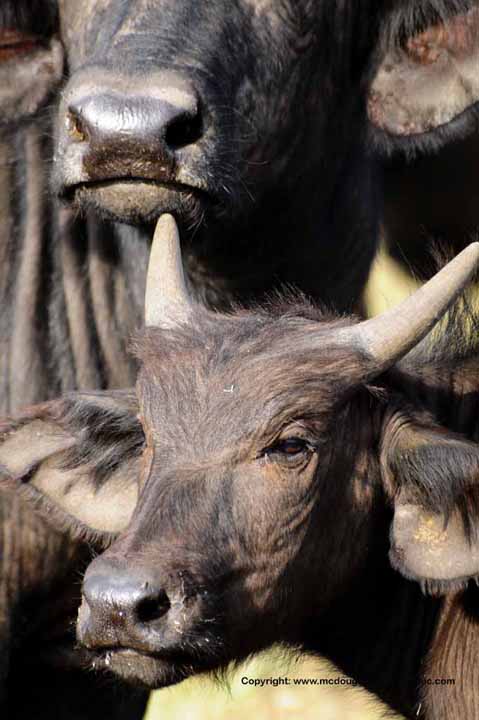Adventure
The Buffalo (Syncerus caffer)
-Paul McDougall

Buffalo are strange animals to photograph, they are just there, and you do tend to take them for granted, but I guess my best memories of these animals are in Masai Mara when the large herds are in the area of the reserve that you can see them easily. When
they are here, they mass across the open ground and usually are found all over the tracks and roads, this gives you the opportunity to drive through the herd and literally just feel like you are part of it, smelling them and listening to their distinctive
sounds and also the sounds of the little ox-pecker birds that clean the insects and parasites from these animals. It really is one of those moments that cannot be described on paper, but you really have to experience it first hand, and see just how heightened
your senses are. I have also watched a female buffalo lose and then search for her calf, and literally walking past it every time and not being able to find it. This actually showed a different side of buffalos, instead of the aggressive uncompromising side,
this mother showed a real tender and loving side, and she was clearly distressed that she couldn’t find it. Now that is not often seen.

The buffalo is one of the most successful African mammals. The male buffalo can way up to 870kg although averages 686kg, it can be recognised b its huge horns that form a boss at 7 years old. The female buffalo weighs on average 576kg and her horns although
big do not form a boss. During the great rinderpest epidemic of the 1890’s, no animal was harder hit than the buffalo. By some estimates for every one buffalo that survived 10,000 died. After the disease hit the whole continent of Africa, the survivors set
about re colonizing their ranges, buffaloes are prolific breeders, therefore in some National Parks buffaloes need culling to avid habitat degradation caused by overpopulation.

Good buffalo habitat usually means dense cover such as thickets, although buffaloes can also live in very open woodland . Herds of several hundred are common and herds of over 1000 are sometimes seen. The buffalo is a bulk grazer and is able to fed upon grasses
too tall or coarse for most other grazers, it is also less partial to young tender shoots enabling it to easily thrive alongside other grazing herbivores.

Buffaloes are highly gregarious and non-territorial, they form large mixed herds with a male dominance hierarchy. The basic units of buffalo herds are stable groups and or clans of presumably related cows, to which there are a number of adult and sub-adult
bulls that are ranked in order of age and dominance status. Sedentary old bulls form their own herds the whole year and bachelor herds of sub adult and prime males often separate from the herds during the dry season when no breeding is taking place. Buffalos
drink water every 24 hours and spend their time equally between resting and grazing. Vocal communication is important within buffalo society.

Many of the calls resemble the lowing of domestic cattle, it is particularly important that they effectively communicate given the large herd sizes and the close nature of their groups. Females calve at about 5 years and produce one calf after a gestation period
of 11.5 months (compared to 9 months for domestic cattle), the male is ready to enter reproduction competition at 8-9 years. Where wet and dry seasons are clearly defined buffaloes are seasonal breeders. Buffaloes in Kenya are regularly seen in the National
Parks and Reserves, the best places to see them are Lake Nakuru NP where they can often be seen on the lake shore and for larger herds Tsavo and Masai Mara are both good.
|